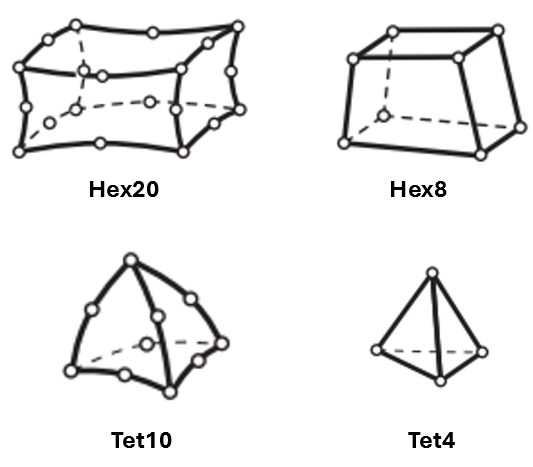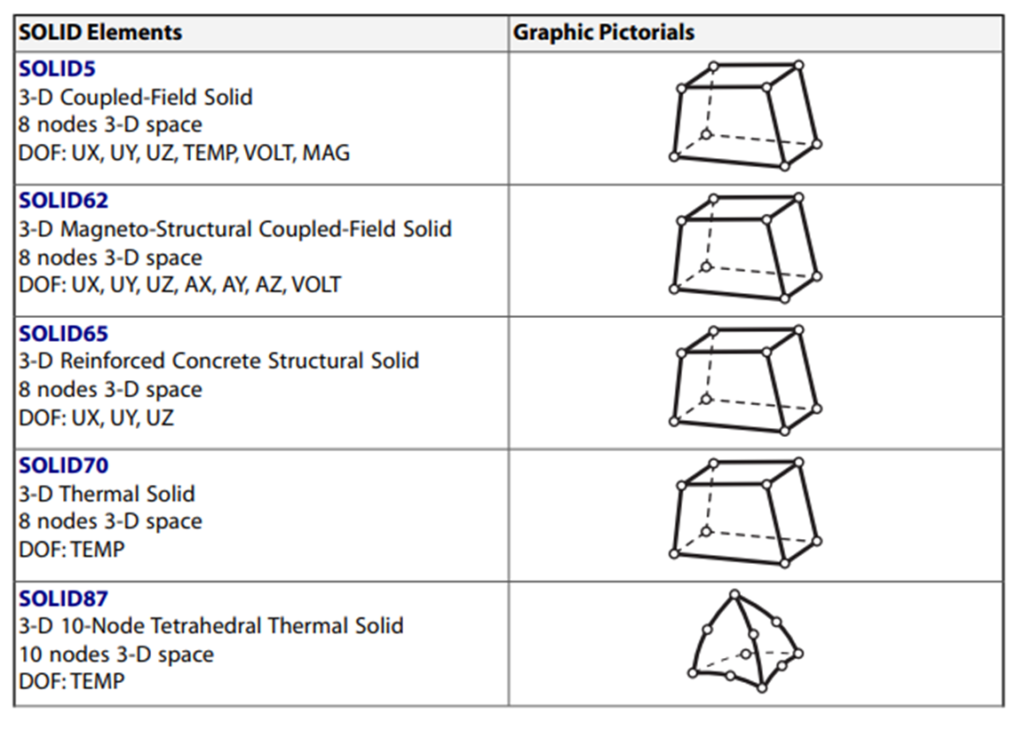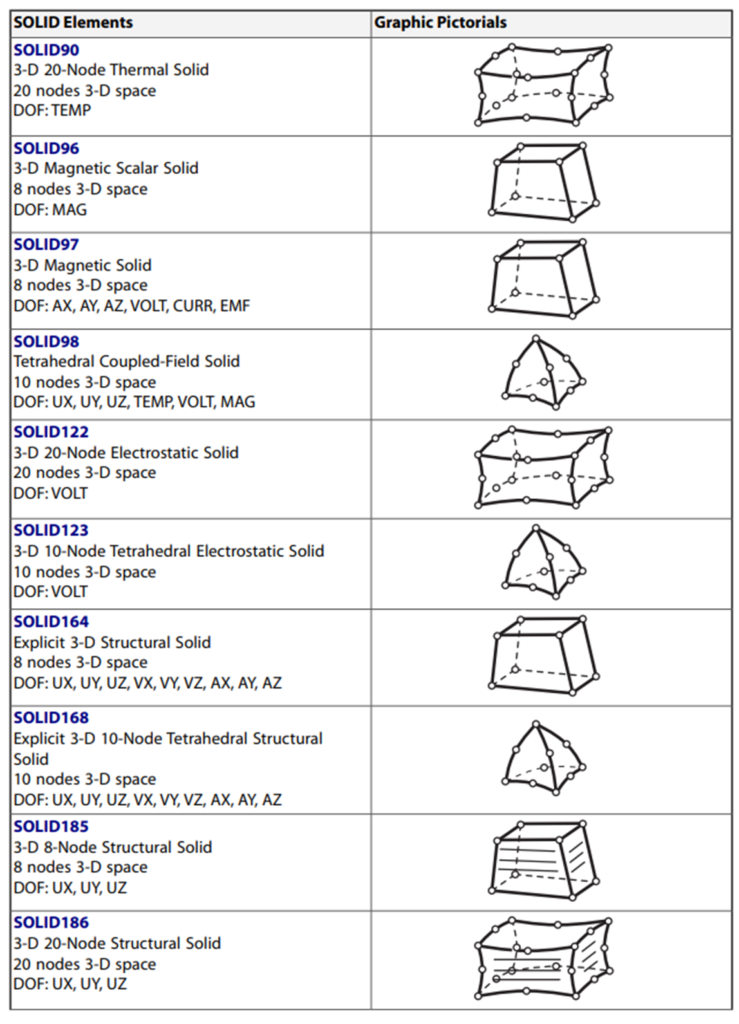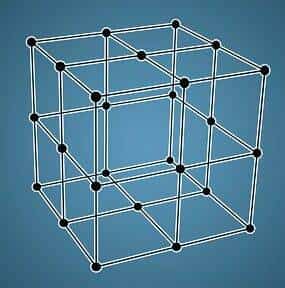Introduction
In this brief article we will summarize the characteristics of the 3D element types available within Ansys. We have already published several articles on this topic on this website. Wherever relevant, we will provide the links to those articles to supplement the content that is presented here.
The Element Types
FE element types are characterized by a shape and the number of nodes that form the element. The four main 3D FE element types are:
- Hex20 : A 20 node Hexagonal Quadratic (Higher order) element
- Hex8 : An 8 node Hexagonal Linear (Lower order) element
- Tet10 : A 10 node Tetrahedral Quadratic element
- Tet4 : A 4 node Tetrahedral Linear element
You can read more on linear vs quadratic elements here : linear vs quadratic elements
Figure 1 shows a pictorial representation of these element types.

These are the four main element types – A variety of specialized elements (such as SOLID90, SOLID186 etc.) based off of these four types are available within Ansys. These elements primarily differ in their capabilities and suitability for the type of physics that is being dealt with.
The figure below provides details on these element types:

As you can see the available degrees of freedom (DOF) for each element type is what distinguishes them from each other. The table is essentially a summary of the images below. You may refer to the images for further information.
Note that some of the elements in the images are not covered in the table above – they are special elements that do not fit under the four main element categories mentioned earlier. For example, Solid Shell element (SOLSH190). You can find more details on Solid Shell elements here : Solid vs Shell vs Solid Shell Elements.




